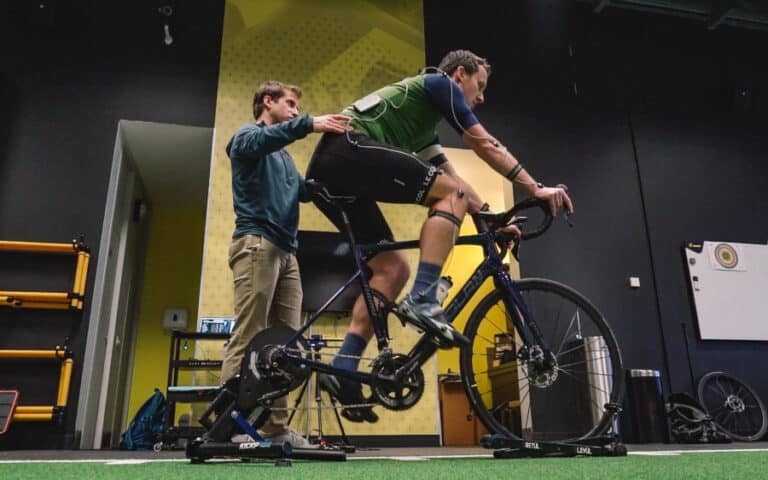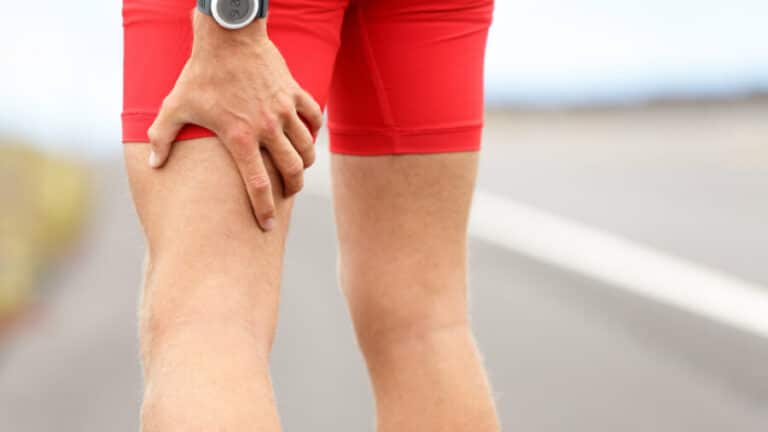This follow up blog to our previous one on “Hamstring Injury Diagnosis” is written to give you the best hamstring exercises as part of a full rehabilitation program.
You should always be guided by experienced Sports Medicine Doctors and Physiotherapists such as those right here at Rehab 4 Performance in Liverpool in the Northwest of England. We offer in person and online consultations and rehabilitation to give you the best starting position on your journey to recovery.
Have a read for the best hamstring workout exercises, this program has been developed over many years and is based on our experience rehabilitating hamstring injuries with elite athletes.
Anatomy and Function of the Hamstrings
Knowledge of the anatomy and function of the hamstrings helps to understand which exercises are best suited to target the type of hamstring injury you have sustained. The hamstring muscle group is made up of 3 muscles at the back of the leg and is one of the most commonly injured group of lower body muscles.
These posterior chain muscles originate at the base of the pelvis from the ischial tuberosity and continue in the posterior compartment of the thigh to attach to either side of the knee joint.
On the outside of the thigh (the lateral aspect) is the Biceps Femoris, this shares a common proximal (conjoint) tendon with Semitendinosus. Whilst Biceps Femoris attaches to the outside of the knee, Semitendinosus converges more to the inside (medially) and attaches to the inside of the knee. The third hamstring is the Semimembranosus which also attaches to the medial aspect of the knee.
From a functional perspective, Adductor Magnus is often referred to as the “4th Hamstring” due to its role in hip extension and would be considered when programming exercises to target the legs more medially.
For the purposes of simplicity, we will consider the hamstring muscle groups collectively to have 2 main actions; those actions being Hip extension and Knee Flexion.
Clearly, for a biarticular (passing two joints) group of muscles that are involved in explosive actions such as sprinting, it is the combination of actions when the muscles are working concentrically, eccentrically or isometrically across the hip and knee joint in unison (depending on the stage of the sprint cycle) that can result in the hamstrings being injured and will also influence the best hamstring exercises selection when it comes to prescribing the optimal loaded movements for rehabilitation and recovery.
Types of Hamstring exercise
Most exercises will be considered either hip or knee dominant but in reality, it is vital to consider both the action of the hamstring muscles and the method of contraction. Hip dominant eccentric, Hip dominant isometric, Knee dominant eccentric etc, keeping this in mind will help to make sure all aspects are covered during the rehabilitation and strengthening phases of these leg muscles.
It’s also vital to remember that whilst isolation of the hamstring muscles is important, it is equally important to integrate back into whole body, functional and compound exercises which include hamstring muscle activity as part of collective athletic movements and global strength program stimulating muscle growth.
For the best hamstring exercises we need to be thinking well beyond the leg curl machine and hamstring curls and the good news is the following hamstring exercises can be performed with minimal equipment
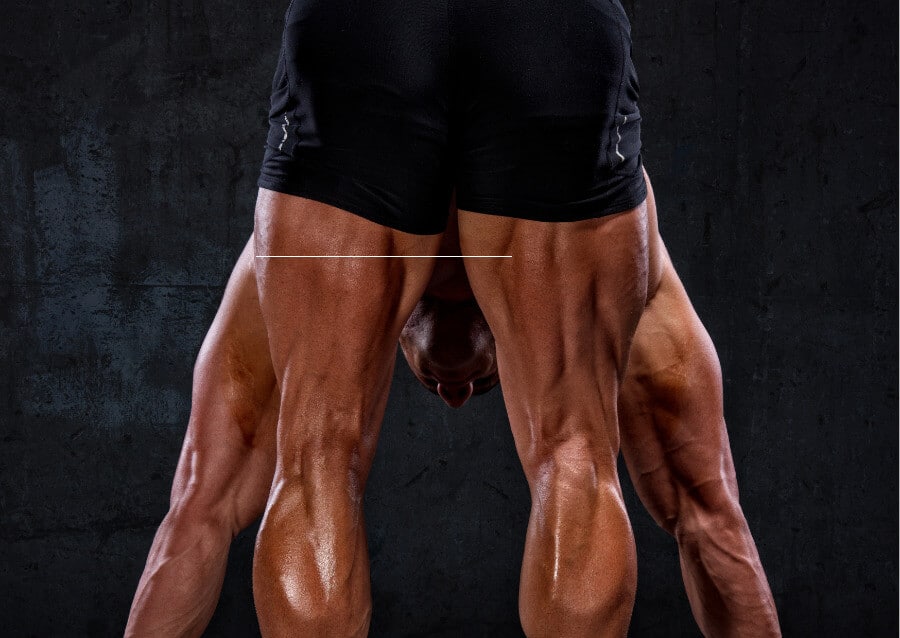
Early phase Hamstring exercises – baseline.
The grade of injury you have sustained will determine how soon you can get going with rehabilitation strength exercises; if we consider the most commonly seen hamstring injuries (Grade 1 and 2 without tendon involvement) then a general rule of thumb is to get going after approximately 5 days.
In the first 5 days the body will be going through the inflammatory phase of healing and it is likely that most exercises will feel quite uncomfortable. As always it is best to be guided by an expert who can combine clinical assessment with advice, treatment and exercise selection to carefully structure your hamstring focused workout.
Glute Bridge and Single Leg Glute Bridge aka Hip Thrusts (Hip dominant hamstring exercise)
The glute series is one of the simplest and safest ways to introduce hamstring training and loading to recently injured hamstring muscles. A starting position for the Glute bridge involves lying with legs bent to approx 90 degrees with the feet shoulder width apart and feet flat on the ground. The exercise simply involves raising the hips from the ground as high as possible (a band around knees help to recruit the glute muscles) with the shoulder blades remaining in contact with the ground (arms relaxed) and the hips forward.
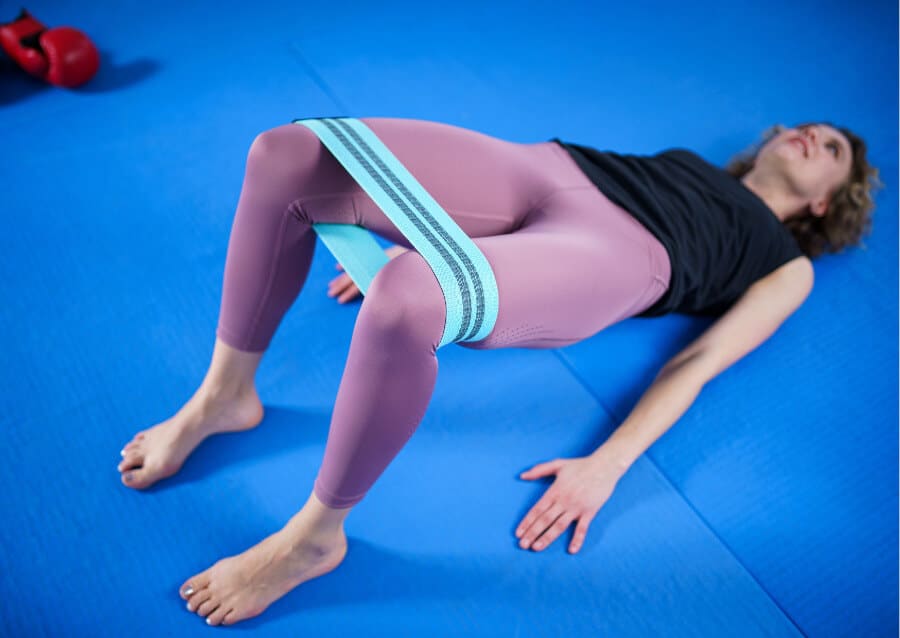
The single leg glute bridge is performed in the same way but on a single leg with the non-working leg in 90 degrees hip flexion; as there is no weight applied these exercises are typically repeated 12-15 times.
To progress the exercises you can increase the reps, sets or weight across the pelvis (using bands or weights) and can also challenge the hamstring isometrically by extending the knee (digging the heel into the ground) until eventually the leg and progressing the load by holding the position for longer (eg 6-15 seconds).
Nordic hamstring curl aka Nordics (knee dominant hamstring exercise)
Few exercises have received as much interest and research as the Nordic hamstring exercise (Nordics). These exercises have been shown to prevent hamstring injuries when performed as part of an injury prevention program and can also be incorporated into rehabilitation.
To carry out a nordic hamstring curl kneel down as shown here, if you don’t have access to kit to fix ankles, a partner will be needed.
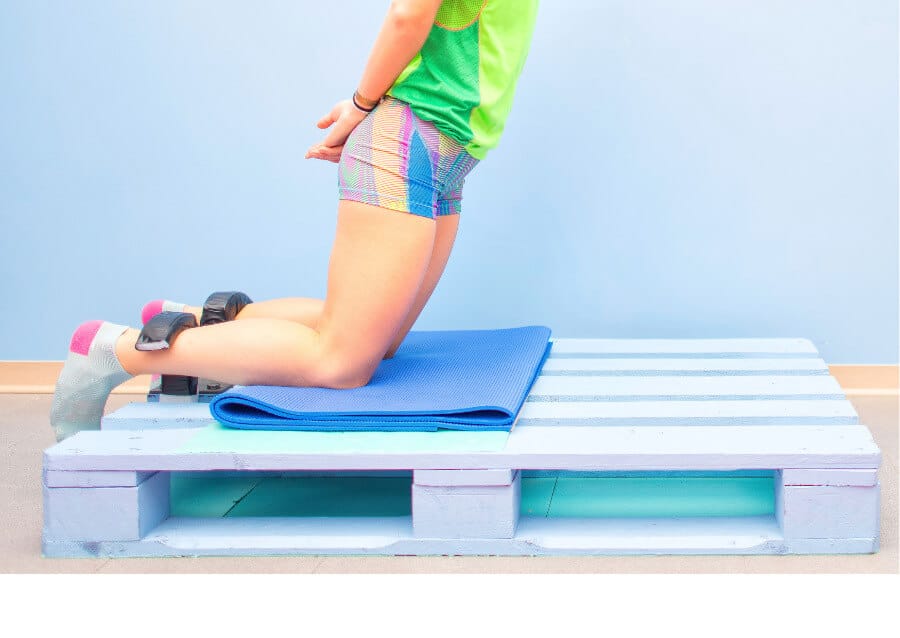
A nordic hamstring curl is a knee dominant hamstring exercise although the hamstrings will also be working isometrically to stabilise the hip on the pelvis. The exercise is performed with knees bent in a tall kneeling position, the feet and ankles are stabilised (usually by a partner) and the movement is to gradually lean forward and lower yourself towards the ground with hands in front to break the fall. If you are not used to Nordics this is an extremely difficult maximal exercise and it is likely your range of motion would be minimal before needing to drop.
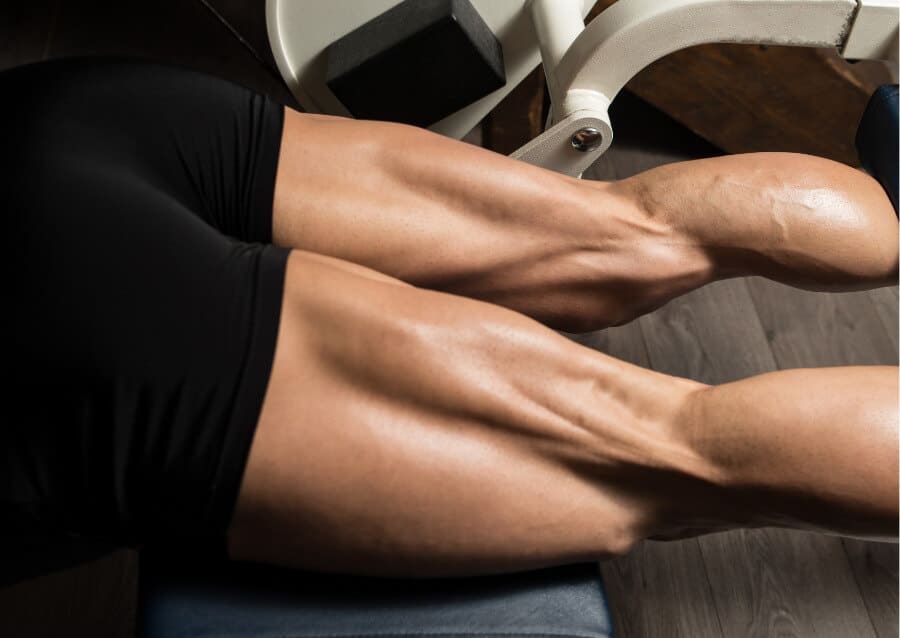
When used within rehab, the Nordic exercise should be regressed and progressed by an expert so it is pain-free at all times. It can be made easier (assisted Nordic) by using a band, reducing the range of motion by falling towards a raised surface (eg a bench) or by starting with isometric holds at the most comfortable angle.
Romanian Dead Lift aka The RDL (Hip dominant hamstring exercise)
Romanian dead lifts are one of the most commonly prescribed exercises for leg day. Whilst they are clearly an exercise which can be used for general leg development they can also be incorporated into hamstring rehabilitation with simple methods to regress and progress them.
The RDL can be executed as a double or single leg exercise and needs coaching for safe and effective technique. It can be introduced as Staggered stance (or kick-start) RDL or using the wall to stabilise the rear leg.
The RDL when done as a double or single leg exercise is a hip hinge, this means the hips move backwards and the torso forward toward the ground. Hip hinge exercises target the hip dominant component of the hamstrings and work eccentrically and concentrically throughout the hip range of motion. Put simply, from a starting standing position the patient will slowly lean forward lowering the weight towards the ground before returning to the start position.
This excellent tutorial runs through the single leg RDL exercise:
The single leg exercise is carried out on one leg it is also excellent in promoting foot, ankle, pelvic and lower back stability whilst targeting the hamstring muscle group.
The RDL should be introduced at bodyweight only until the technique is mastered, it should be pain-free at all times during rehabilitation and progressed to weights (using barbell, dumbbell or kettlebell) under the guidance of an expert.
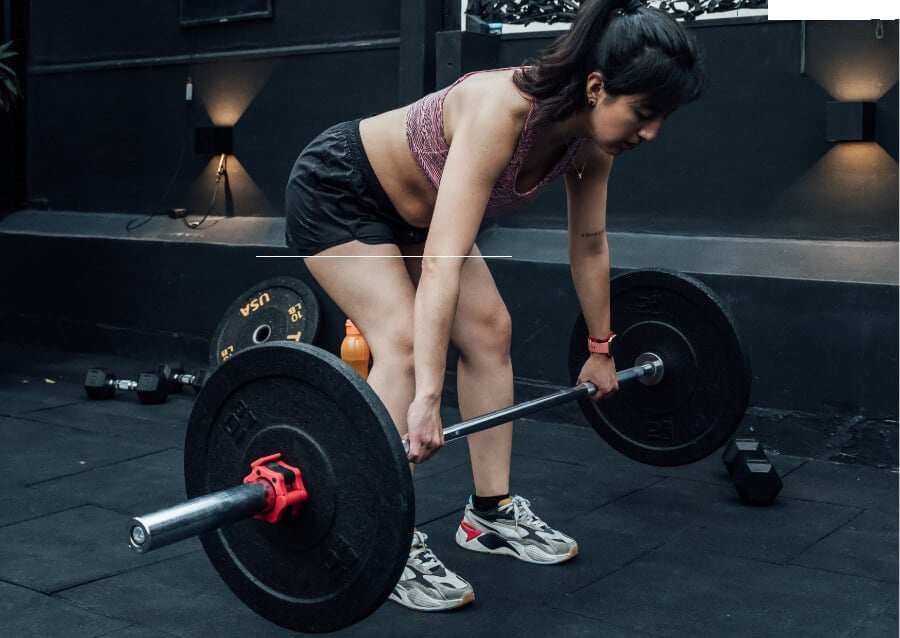
Slider leg curl aka SLIDERS (knee dominant hamstring exercise)
Progression along the slider leg curl stream is an excellent way to target gradual lengthening of recovering tissue under isometric and eccentric load.
In the initial stages these exercises can be introduced as double leg or single leg curls on a Fit (swiss) ball before progressing to double leg sliders on a slide board (feet hip width apart). The emphasis is on maintaining spine and pelvic neutral (hip extension) whilst lengthening eccentrically.
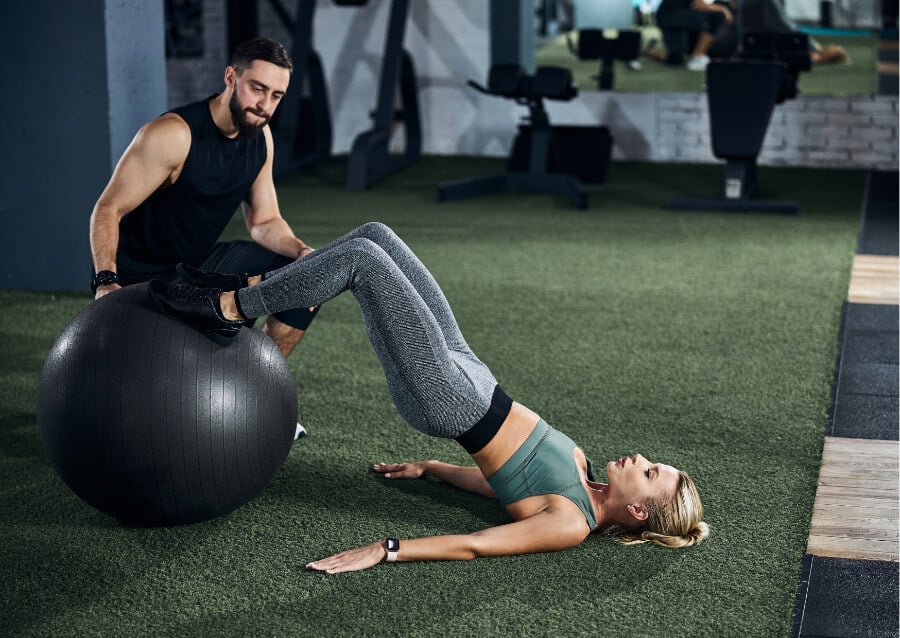
This is an excellent video demonstrating some of those progressions:
Progression to single leg Sliders will further challenge the hamstring and be combined with prone eccentric hamstring curls also known as lying leg curl. The prone eccentric hamstring curl can be done using rubber band resistance or a Keiser functional trainer.
End stage progressions for this open chain eccentric training which includes combined hip extension and pelvic stability would be supine “tantrums” which emphasise speed of contraction and rate of force development.
Isometrics
Isometrics are an excellent way to introduce load to injured structures from the very earliest phases of rehab and can be used with progressing intensity right up to end stage. As the patient is in control it helps to build confidence and when delivered whilst receiving force feedback data from devices such as force plates, hand held dynamometers or isokinetic dynamometers is also a way to be progressive and show improvement in the force absorbing capability of the recovering tissues.
Early phase isometric exercises for hamstring include Single leg isometric holds (heel digs) with the option to lengthen the hamstring as it is asked to work. Typically it will be harder to recruit in outer (lengthened) positions and this is reflected in any force data captured.
Isometrics can be carried out (double leg progressing to single leg, right leg then left etc) on the 45 degree hip or Glute/Ham equipment as shown here:
It can also be introduced as a single leg heel dig on a bench or between two benches to progress load further with progressions in terms of length of hold, reps and eventually speed of contraction.
These exercises may be recognisable as a “Bosch” approach and along with isometrics will progress to “switches” or A’ speed exchange drills between benches.
Asklings
The majority of exercises shown so far have been based on progressive load as the primary aim. Increasing the length of the muscle to cope in outer range can also be introduced with the Askling exercise progressions. This is an excellent explanation of how these exercises can be introduced and progressed.

Global Strength – Core Strength & Movement Control
Alongside hamstring specific exercises it is important to periodise in general lower body strength, upper body strength and core strength work to optimise the outcome of the hamstring program by including work which will target calf muscles, adductors, glutes, lateral glutes and quadriceps workout in particular.
Isolate then integrate is an ethos we have always lived by and by this we mean we firmly believe in both.
A good starting position is to consider hamstring specific exercises as optimising scar formation, with this is mind the movement should be as constrained and isolated to the hamstring as possible, remember the body will always find a way to cheat around painful or weak areas but within rehab we need to target these areas.
Global strength allows the hamstring to work within its current capacity for that phase of healing whilst optimising movement competency and athletic development alongside the recovering tissue.

Global strength exercises could include
Goblet squat
Sumo squat
Hip thrusts (loaded)
Back squat
Trap bar deadlift
Reverse lunge
Split Squat
Bulgarian Split Squat
Rear foot elevated Split Squat
Lateral Lunge
Step-ups
Pistol squats
Loaded step-ups
Single leg squat
Leg press
Single Leg press
Kettlebell swings
Summary
There are 101 ways or more to strengthen the hamstrings and the advice in this blog is a snapshot of the best hamstring exercises based on current evidence, experience and a focus on Rehabilitation.
The exercises selected and the progressions are targeted at progressive loading of injured tissue but can be utilised all the way through to performance enhancement, athletic development and the prevention of hamstring injuries.
It is important to get appropriate guidance from experts who can accurately diagnose the injury (see previous blog on Hamstring injury diagnosis) and introduce appropriate exercises based on clinical presentation and prognosis.
Hamstring Rehabilitation at Rehab4Performance
Contact us and arrange an appointment with one of our Physiotherapists or Sports Doctor.


